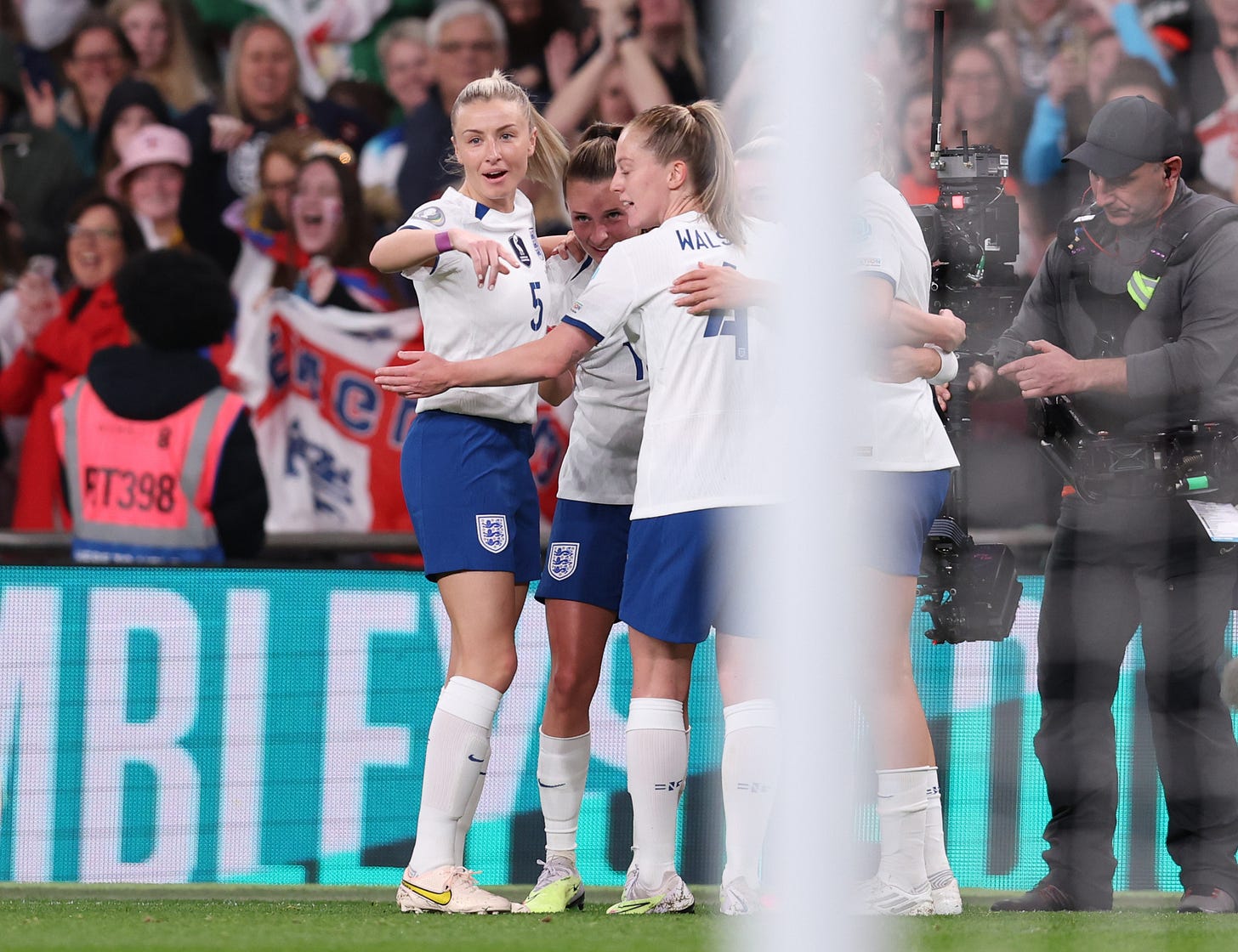Analysis: England 1-1 Brazil
The first women's Finalissima became a game of two halves, literally, as Pia Sundhage deployed two separate formations against England, with varying degrees of success.

“We’ve not faced that before,” said Keira Walsh just an hour after Brazil had offered up England one of their toughest games in the tenure of Sarina Wiegman, despite the Lionesses stretching their unbeaten run under the Dutch head coach to an ever-increasingly impressive tally of 30.
“A lesson for us” and a “a lot to reflect on” were the words of Rachel Daly and all the comments coming from England’s side were vastly different to what we’ve become used to, with some games under Wiegman turning into a robotic procession, such has been England’s dominance and confidence before, during and after the European Championships.
The first half looked to be setting up a familiar affair as England’s new belief in possession along with the intensity of their attacking play made life increasingly difficult for Pia Sundhage’s Copa America champions, and it felt like a mere matter of time before Ella Toone slotted home the opener with what was one of the best team goals we’ve seen under Wiegman.
16 passes all told leading up to Lucy Bronze’s trademark burst into the box, her pull back finished off emphatically by Toone, who had a much more impressive game than at the Arnold Clark Cup and looked every bit the England number ten.
The game from a tactical point of view was fascinating, and all down to the fact it became two different games rolled into one.
That was due to Brazil and Sundhage shifting away from their almost ever-present 4-4-2 and going with a 3-5-2, in the first half at least, in order to try and stifle England’s threats out wide.
Check out over 100 more unique stories in WFC’s Premium section, available for just £45 for 12 months, paid in one go, or a £6 a month rolling subscription.
All subscriptions come with a 7-day free trial to allow you to explore our full archive.
Plus, guarantee you everything that is to come over the next 12 months…
Antonia and Tamires were the wing-backs left to deal with England’s wingers, and the latter, now 35, understandably struggled somewhat to contain the brilliance of Lauren James, and even if she did, Bronze was galloping forward on the overlap.
Antonia had more luck with Lauren Hemp, but the flying winger still got plenty of balls into the box, though more often had to go on her own with Jess Carter finding it less natural to get forward as Bronze did down the right.
Sundhage was open in her belief a 3-5-2 would allow her wing-backs to get closer to England’s wingers, and three centre-backs of Lauren, Rafaelle and Kathellen would be able to deal with the sole presence of Alessia Russo, who indeed had a quiet game in front of goal.
It was the lack of tracking from Ary Borges which was their downfall as the Racing Louisville midfielder failed to get close to Toone was she strolled unmarked into the box to slot home the opener. But beyond that, they did a good job of frustrating England in front of goal, with Leticia relatively untroubled bar a couple of long-range efforts from Bronze and Georgia Stanway.
“I'm very happy with the players because they embraced new ideas,” said the experienced Swedish head coach. “Five at the back made us look good in the second half because we had energy for the second half. They're young, a young team and a big crowd, but they did great.”
Sundhage’s admittance she not only played a back three to thwart England, but to also conserve her team’s energy, knowing they would do a lot of sitting back without the ball was interesting, with the head coach clear flexibility would be important at the World Cup.
Keep reading with a 7-day free trial
Subscribe to Women's Football Chronicles to keep reading this post and get 7 days of free access to the full post archives.



